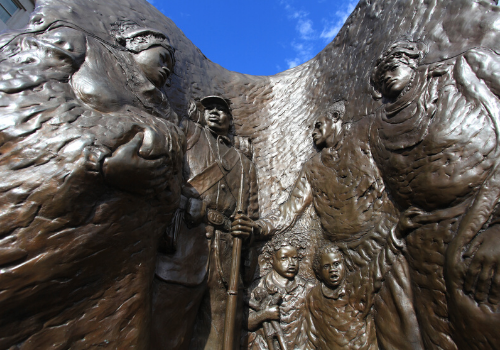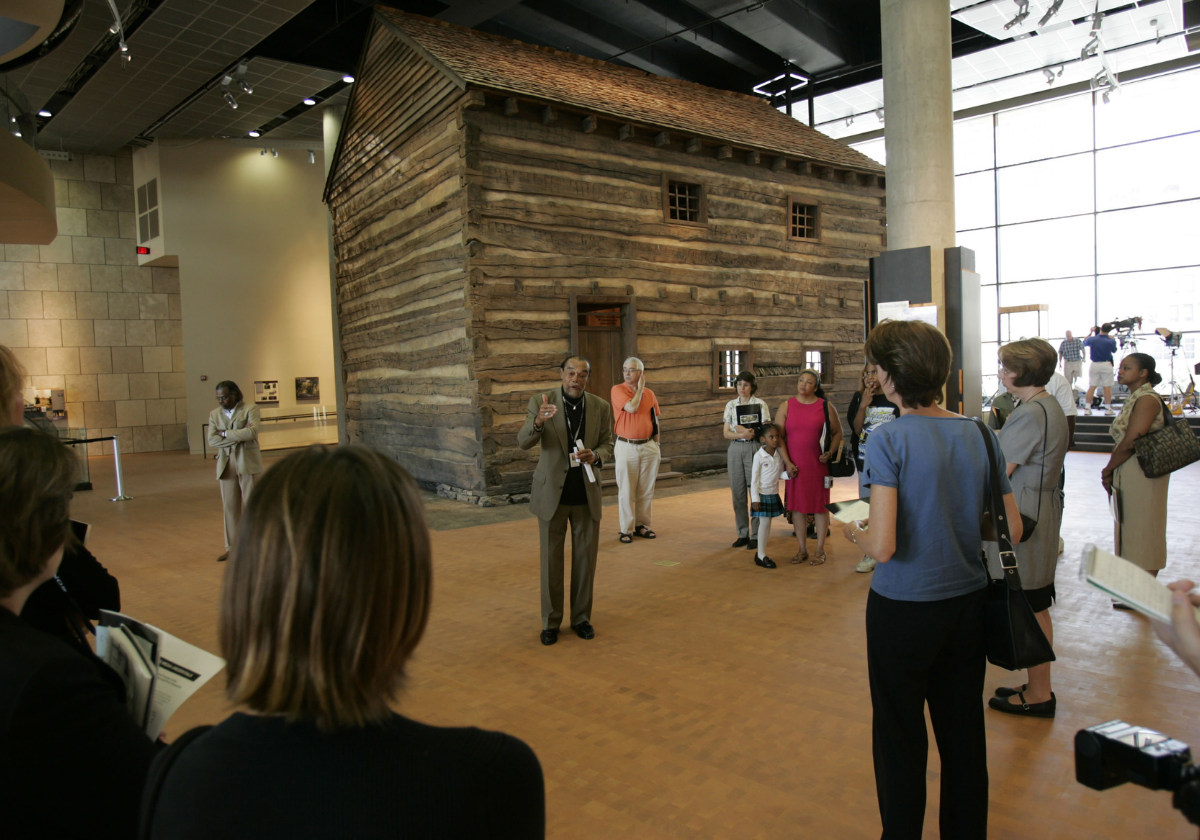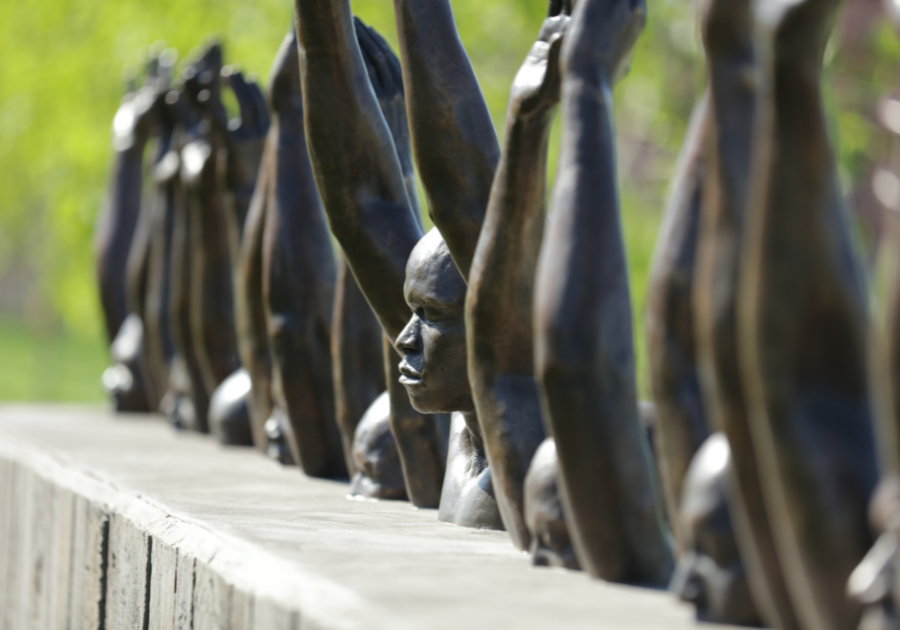February is Black History Month. One way to honor the meaning of the month with your family is to visit historic sites, memorials, and museums throughout the country that inspire, celebrate, and educate about African-American culture and history.
Here are 10 significant sites in the United States your family can visit or learn more about during Black History Month in February — or any time of year.
Southern United States
National Memorial for Peace and Justice
Montgomery, Ala.
This memorial, which opened in 2018, gives a sobering, immersive look at the history of racial terror in the United States. The National Memorial for Peace and Justice features an emotionally powerful installation of more than 800 steel pieces, each representing a county in the U.S. where racial lynching took place. Just a short distance away is the Legacy Museum, located on a site where enslaved people were once traded.
MLK Jr. World Peace Rose Garden
Atlanta, Ga.
The Martin Luther King Jr. World Peace Rose Garden borders the Peace Plaza, in front of the Visitor Center. It has 185 roses in a variety of colors and fragrances. It was established in 1992 as part of a worldwide effort to help youth recognize the importance and value of peace. The graves of Dr. and Mrs. King can be seen directly across the street if you stand at the Peace Plaza, facing the rose garden.
Tuskegee Airmen National Historic Site
Tuskegee, Ala.
The Tuskegee Airmen were heroes of World War II and the first African-American military aviators in the United States Armed Forces. At the time, they were subject to Jim Crow laws, and the military was racially segregated. Their story reflects the struggle of African Americans to achieve equal rights. Watch this film, which is shown at the Tuskegee Airmen National Historic Site, that recounts the Tuskegee Airmen's story:

Eastern United States
African Burial Ground
New York, N.Y.
Building construction in 1991 unearthed intact human skeletal remains 30 feet below street level. When archaeologists explored further, they found the "Negroes Burial Ground," a six-acre burial ground containing an estimated 15,000 intact skeletal remains of enslaved and free Africans who lived and worked in colonial New York and who died between the 1630s and 1795. It is the nation’s earliest and largest African burial ground rediscovered in the United States and became a National Historic Landmark in 1993.
African American Civil War Memorial
Washington, D.C.
This memorial honors the more than 200,000 African-American soldiers and sailors who served in the U.S. Army and Navy during the Civil War. Their service helped to end the war and free more than four million enslaved people. While in D.C., also don't miss the Martin Luther King Jr. Memorial, a monument worthy of the great works of the Civil Rights leader.
 National Park Service/Anthony DeYoung The African American Civil War Memorial in Washington, D.C. |
Black Heritage Trail
Boston, Mass.
The Black Heritage Trail is a 1.5-mile-long trail with 10 stops in Boston linking sites that explore the trials of the free black community which inhabited the North Slope of Beacon Hill from the late 18th century through the 19th century. Visitors can start at the Robert Gould Shaw/Massachusetts 54th Regiment Memorial or at the African Meeting House at the Museum of African American History.

Midwestern United States
National Underground Railroad Freedom Center
Cincinnati, Ohio
The National Underground Railroad Freedom Center tells the heroic stories of people who were central to the Underground Railroad. But it also takes visitors through contemporary times by delving into continuing modern-day issues such as human trafficking.
 Photo courtesy of National Underground Railroad Freedom Center/Mark Bealer Photography Photo courtesy of National Underground Railroad Freedom Center/Mark Bealer Photography |
Charles H. Wright Museum of African American History
Detroit, Mich.
There are many sights to see in Detroit when it comes to black history, but one can't-miss is Charles H. Wright Museum of African American History, home to more than 35,000 artifacts regarding the African American experience. Explore and celebrate African American history and culture through this unparalleled collection.
Negro Leagues Baseball Museum
Kansas City, Mo.
In the early 1900s, black Americans weren’t allowed to play on Major League Baseball teams. But that didn’t stop athletes from playing and forming their own teams. Today, the Negro Leagues Baseball Museum in Kansas City, Missouri, preserves the fascinating history of black baseball players from the late 1800s to the 1960s. Visit their website for a virtual tour, and watch legend Buck O'Neil talk about his greatest day in baseball:

Western United States
Museum of the African Diaspora
San Francisco, Calif.
Diaspora means the dispersion of any people from their original homeland. San Francisco’s Museum of the African Diaspora, often referred to as MoAD, is a Smithsonian affiliate contemporary art museum whose goal is to celebrate black cultures, ignite challenging conversations, and inspire learning – all through the global lens of the African diaspora. Their lineup of events includes many virtual options, so you can take part no matter where you live!
MoAD also regularly posts on its YouTube channel, everything from lectures and panel discussions to conversations with artists featured at MoAD, like this one featuring Gio Swaby, a Bahamian interdisciplinary visual artist known for her textile portraits that explore and celebrate Blackness:
Helen Bryant is the publisher of Macaroni KID Louisville Central and Macaroni KID Louisville Southwest and Kara Murphy is the publisher of Macaroni KID Erie, Pa.



